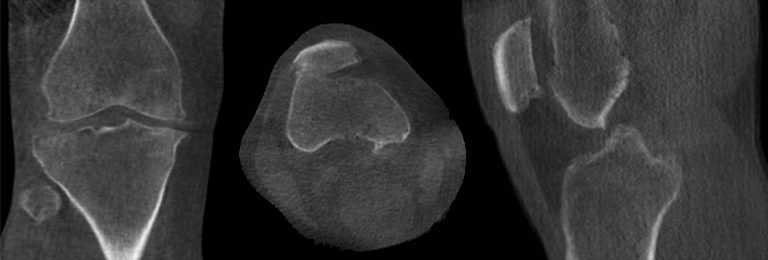Quadriceps Grafts May Be Superior to Repair ACL in Adolescents
 Younger patients who required ACL reconstruction surgery have historically been treated with a hamstring graft to replace the injured ACL, but an analysis of MRI images suggests a graft from the quadriceps may be superior.
Younger patients who required ACL reconstruction surgery have historically been treated with a hamstring graft to replace the injured ACL, but an analysis of MRI images suggests a graft from the quadriceps may be superior.
Researchers from the Hospital for Special Surgery in New York City evaluated graft maturity by comparing MRI signal intensity of quadriceps tendon autografts and hamstring tendon autografts used in primary ACL reconstruction. Their research was recently presented at the American Orthopaedic Society for Sports Medicine - Arthroscopy Association of North America Combined 2021 Annual Meeting.
Daniel W. Green, MD, and Frank A. Cordasco, MD, from the Hospital for Special Surgery in New York, reported that the researchers analyzed 71 patients (38 in the HTA group and 33 in the QTA group) under the age of 18 who underwent a primary ACL reconstruction between 2011 and 2018 at the Hospital for Special Surgery, using either a HTA or QTA with available MRIs at six and 12 months post-operatively. Age, sex, and type of surgery were not different between groups.
Signal intensity ratio (SIR) was measured on sagittal MRI by averaging the signal at three regions of interest (ROIs) along the ACL graft and dividing each by the signal of the tibial footprint of the PCL. Statistical analysis was performed to determine interrater reliability and differences between time points and groups.
Green and Cordasco found no significant difference in SIR between groups on the six-month MRI. But, at 12 months, SIR of the QTA group was significantly less than that in the HTA group (p=.029). Within the HTA group, there was no significant difference in SIR between time points. In the QTA group, there was a significant decrease in SIR between the six-month and 12-month post-operative MRI (p=.045).
“The decrease in signal between six and 12 months post-operatively suggests quicker graft maturation and improved structural integrity of QTA as compared to HTA,” said Green. “This provides evidence that one year postoperatively, QTA may have a superior rate of incorporation and synovialization as compared to the HTA.”